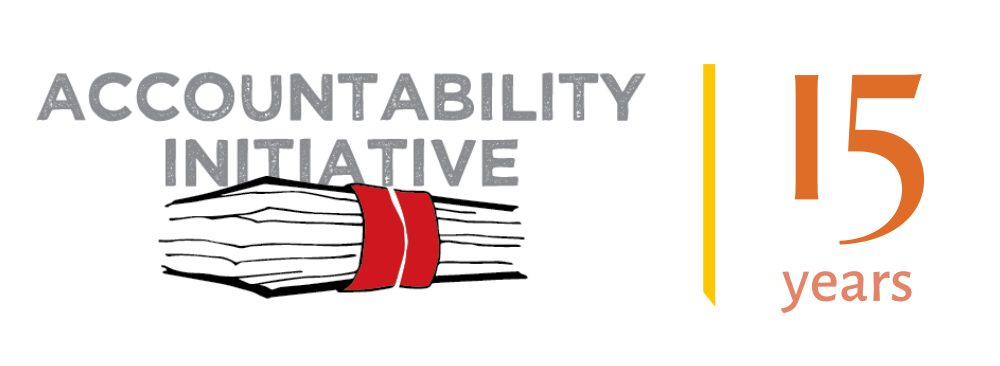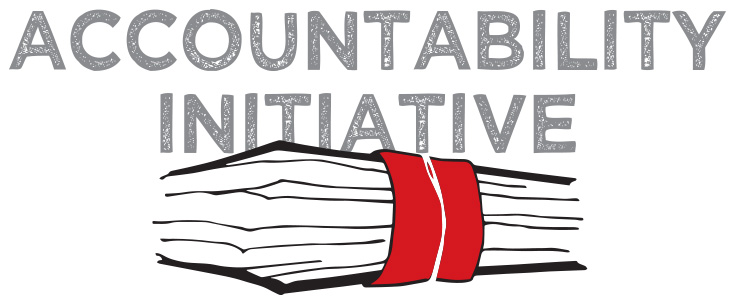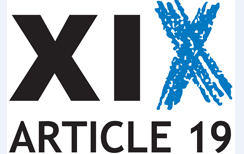Do development funds reach India’s poor? Back in the mid 1980’s, then Prime Minister Rajiv Gandhi famously guesstimated that of every one rupee spent on development only 15 paise reach the poor. 25 years on, and despite significant increases in development funds, the story remains largely unchanged. Administrative inefficiencies, poor targeting, high implementation costs and leakages characterize the implementation of almost every development program and consequently only a small fraction of development funds end up reaching their final destination. This reality is perhaps the only point of consensus amongst India’s politicians, policy makers, bureaucrats and citizens. Although the problem is a well recognized one, there is surprisingly little data or analysis in the public domain on how development funds travel through the system and how much, in fact, reaches the poor. Even today, politicians and policy makers rely on guesstimates when they speak of problems with the country’s development funds. One primary reason for this lack of data is that the current administrative system is designed such that there are very few incentives in government to regularly analyze expenditures at the implementation level and even fewer to make this public. These limitations have seriously
comprised accountability.
Take the instance of Centrally Sponsored Schemes (CSS) that now dominate social sector spending in the country. Funds for CSS are released by the Government of India (GOI) to State Governments and other implementing agencies. When GOI releases funds, it considers its job done and treats releases as expenditures. There is therefore, a disconnect between the release of funds and actual expenditures on the ground. As a 2007 Planning Commission Working Paper pointed out, “the connection between release of funds by the central government and actual expenditures for physical inputs by the
implementing agencies is currently, very obscure.” In such a scenario, there are no incentives at the central government level to track expenditures to the point of implementation.
Interestingly, the Government of India’s budget documents do not even report on actual expenditures at the level of implementation. Data on expenditures can be found in the annual audited accounts of the Government but these have a two year time lag and are rarely available in the public domain. From time to time the Comptroller Auditor General (CAG) undertakes performance audits of CSS’s. Although these reports are publically available performance audits are sporadic and not done for all CSS’s. Importantly, even here disaggregated expenditure data is only available up to the district level and not below. In the last few years, the Government of India (and many state governments) has been working to put in place Management Information Systems (MIS) for many CSS that are aimed at making expenditure data available to the public in real time. However, as we discovered when we ploughed through these data bases, the quality of data is very poor and not regularly updated. Additionally, with a few exceptions, these data bases are not disaggregated below the district.
So where does all the money go? And as citizens of India, how can we find out and hold government accountable for this money? In early 2009, the Accountability Initiative, National Institute of Public Finance and ASER Centre joined hands to answer this question. Initial investigations resulted in the formulation of PAISA (Planning, Allocations and Expenditures, Institutions: Studies in Accountability), India’s first and only citizen led effort to track development fund flows at the point of implementation. To start, this exercise is focused on elementary education and more specifically the Sarva Shiksha Abhiyaan (SSA) but the intention is to expand this work to other development programs as the projects. PAISA’s specific point of investigation is the school grants in SSA2. School grants account for less than 10 percent of total SSA allocation. Despite their small size, PAISA chose to focus its analysis on these grants for a variety of reasons.
First, school grants are the primary funds that reach the school bank accounts. Second, school grants are meant to be spent on school infrastructure and are thus critical to the day to day functioning of the school. And third, school grants are meant for all elementary schools in country. Tracking these grants would thus allow for cross statecomparisons.PAISA began its first round of investigations with a district wide study in Nalanda district, Bihar in March 2009. The
survey was timed to catch the end of the financial year (the financial year closes on March 31st) to enable tracking and
analysis of the progress of funds through the year. Data was collected from a sample of 100 schools in the district
over a 3 day period. The results were unsurprising but shocking, nonetheless. Out of 100 schools sampled, nearly
a quarter of the schools had not received SSA grants even at the close of the financial year. For those that had
received money, delays were common. Most schools reported receiving the first tranche of funds only in October
– one semester in to the school year. Irrespective of when funds arrived, expenditures were incurred somewhere
between January and March – the last semester of the school year. Grants reaching late and problems with the
school bank account were the main reasons for delayed expenditures.
The Nalanda experience clearly highlighted that fund tracking at the school level is indeed possible and necessary. By simply tracking fund flows for one financial year, PAISA could help identify the extent of the problem, and the kinds of bottlenecks schools encounter on a day to day basis. The next step for PAISA was to experiment with taking the survey to a nationwide scale through ASER 2009. Simplicity is the key to a national level survey. To this end, efforts were made to convert the PAISA tool in to a simple, accessible and easy to use tool. The ASER survey is conducted by civil society groups across the country. Making PAISA the first and only citizens audit of public funds reaching elementary schools. The PAISA 2009 report is the outcome of this first-ever nationwide exercise.
The PAISA survey aims to answer the following questions:
(a) Does money reach schools? i.e. do schools get their grants?
(b) If so, when do schools get their money? i.e. do grants arrive on time?
(c) Do schools get their entire entitlement? i.e. the full set of grants that came in their name?
(d) How much information do key stakeholders – headmasters, regular teachers or para teachers – have about monies that reach the school?
(e) Do schools spend their money?
(f) What is the outcome of this expenditure?
The PAISA survey covered a total of 14,560 primary and upper primary schools. Of these only 1405 schools did not provide surveyors with any information on school grants which is less than 10 percent of the total sample. The survey results at the aggregate, national level highlights some interesting truths:
(a) Schools receive their grants but rarely on time: More than two-thirds of all schools surveyed reported receiving grants in the full financial year from April 2008 to March 2009. Among the three, more schools reported receiving the TLM grant (which goes directly to teachers) than the other two. But grants do not arrive on time. When the survey was conducted in
October 2009, at least 40% of schools had not received grants for the financial year 2009. Less than half of upper primary schools reported receiving the SMG and SDG in the first half of the financial year 2009-10.
(b) Even when money reaches schools, they do not always get their full entitlement: 45% schools reported receiving all the three mandatory grants in 2008-09. 20% did not receive any grant. 35% schools reported receiving one or two grants, but not all. One possible reason for this result could be the fact that respondents are not aware of the different types of
grants that school received and reported them as one consolidated figure.
(c) Not everyone knows about money in schools: PAISA found that Headmasters have the most knowledge about grants. In over 90% of schools surveyed, the regular teacher and the para teacher also have at least some information. However, their level of knowledge regarding the type of grant, amount of the grant and whether it has been received and spent vary
substantially.
(d) Money gets spent but in the last quarter of the financial year: The good news is that if and when schools receive their money they spend it. In 90% of the cases, schools reported that they were able to spend the money. However, this expenditure is normally in the last quarter of the financial year when the pressure to spend is very strong.
(e) Money gets spent but not always effectively: In terms of outcomes, on the positive side, over 80 percent of classrooms have a writeable blackboard and some form of charts, posters and other educational materials. However, less than half of the schools that reported receiving school maintenance and development grants had usable toilets, and more than 20 percent did not have a working hand pump. More than a quarter of schools that received the classroom grant in the financial year 2008-09 could not complete building it. In terms of physical infrastructure such as toilets, drinking water and civil works, therefore, the outcomes from the public expenditure elementary education are far from ideal.
So what does PAISA tells us? Money does reach but not entirely. Our calculations show that 85 % of grants reached
the schools out of the total amount that should have reached in accordance with school norms (n/b we arrived at this figure after minimizing reporting errors). Importantly, we found that even when funds reach their intended destination, delays are common indicative of deep-seated administrative malaise. And finally, there is the larger issue of how funds get used. PAISA suggests that there are significant gaps in the quality of expenditures. A finding that needs further analysis.
Collecting and analyzing data is a first crucial step. However, there remains the larger challenge of ensuring that data is used effectively both to unblock bottlenecks and to enforce accountability. PAISA is trying to do this in two ways. First it aims to provide data on implementation processes. Tracking fund flows is one way of doing this but going forward, PAISA will supplement this with an institutional analysis that will map administrative constraints and capabilities at the local level. Second, PAISA is trying to pro-actively feed data collected in to the local decision making process. To this end, PAISA has been involved in pilot efforts to disseminate information directly to Parent Teacher Associations and mobilize them to use tools and information to demand accountability for expenditures. Through this process it is hoped that information will also translate in to greater participation and therefore a more effective planning process, one that truly reflects people’s needs and demands.
So, where does PAISA go from here? After one long year of experimentation, PAISA is now set to expand is activities. The focus in the next two -three years will be on tracing funds from the district to the school to understand the entire chain of money as it flows through the system to reach its final destination. This it is hoped, will provide not just much needed data on money flows but also some insights in to the bottlenecks and administrative inefficiencies that have resulted in the current conundrum of increased allocations that never reach beneficiaries. This exercise will be undertaken in sample districts across the country. In addition, the annual ASER exercise will include a PAISA component where national level data on school expenditures will be collected. The key to PAISA is its simplicity, relevance and regularity. We aim to develop tools that can be used by anyone from experts sitting in Delhi to school committees in villages. To ensure relevance and regularity, we aim to produce our data in a manner that is understandable by stakeholders. In the long term
PAISA will expand beyond elementary education in an effort to develop innovative, practical and scaleable tools to track expenditures across all development programs and provide India with much needed data and tools to ensure that the government is accountable for all its development expenditures. Watch this space!
Yamini Aiyar is Director, Accountability Initiative, CPR. Anit Mukherjee is Associate Professor, National Institute of Public Finance and Policy.





